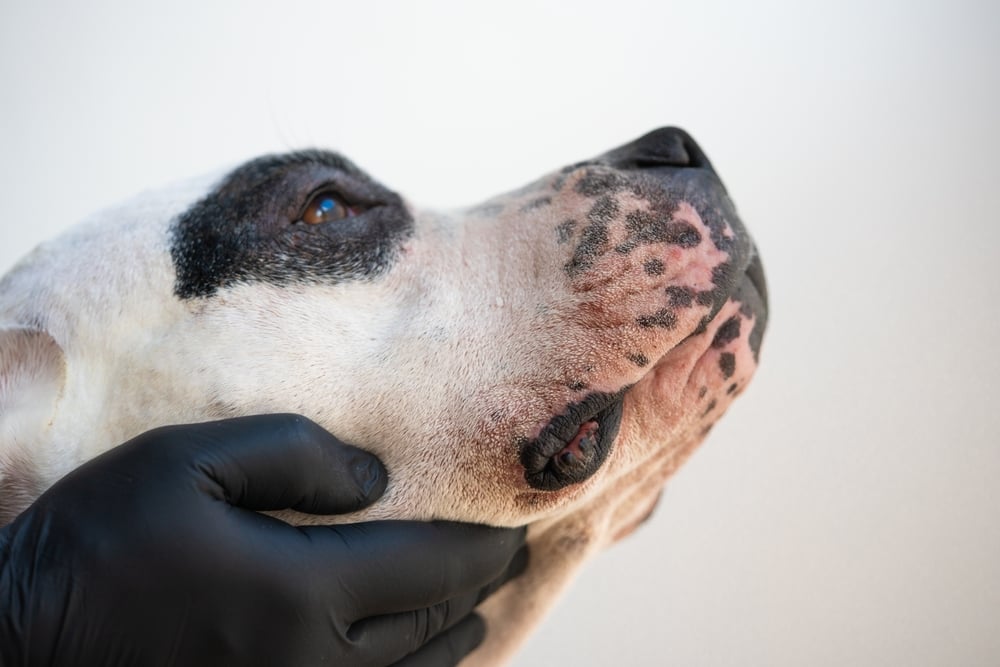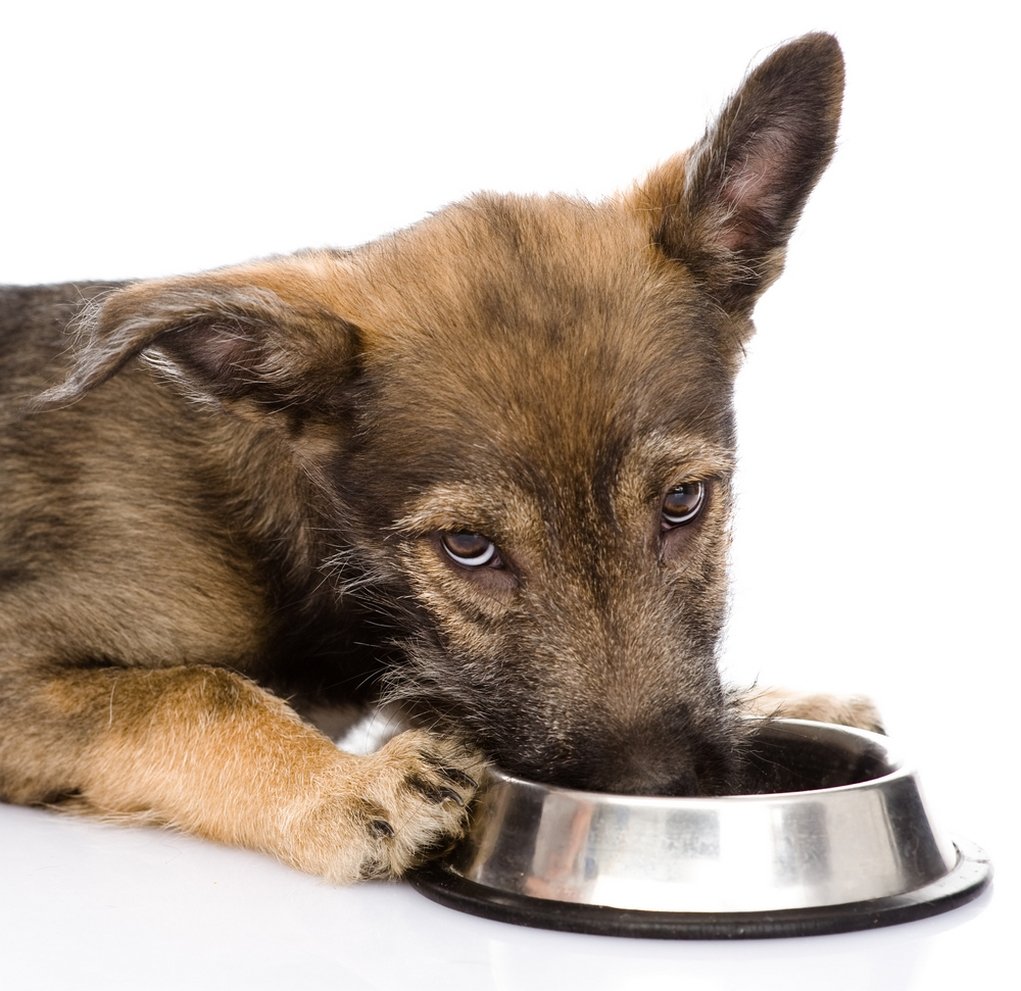
Table of Contents
Did you know that up to 10% of all allergies in dogs are food-related, and the most common culprits might be hiding in your dog’s daily meals?
Yes, believe it or not, food allergies in dogs are a thing!
However, there is still a significant number of pet owners who are not aware of what to do and how to spot canine allergy early on.
And as with any health issue, early diagnosis and intervention can drastically improve a dog's quality of life, so read on and let us know your thoughts!
What Are Food Allergies in Dogs?
Food allergies in dogs occur when their body mistakenly identifies a common food ingredient as harmful and overreacts to protect itself.
It triggers a chemical compound called “histamine,” which signals different immune cells that there's an invader to look out for.
For example, when an allergen enters the body, the mast cells of the skin's dermis release histamine, which then attaches to the nerve cells to trigger itching.
Histamine also causes a runny nose, watery eyes, hives, and, worst, anaphylaxis, among other symptoms.
Some pet owners might confuse a food allergy for food intolerance, or vice versa.
While they're both caused by food our dog's bodies overreact to, food allergy involves the immune system, while food intolerance involves the digestive system, and is generally less severe.
| Feature | Food Allergy | Food Intolerance |
|---|---|---|
| Immune Response | Yes – involves the immune system | No – does not involve the immune system |
| Onset | Can occur after repeated exposure | Can occur after first exposure |
| Common Symptoms | Itchy skin, ear infections, hives, GI upset | Gas, bloating, diarrhea, vomiting |
| Causes | Proteins like beef, chicken, dairy, or eggs | Lactose, food additives, spoiled food |
| Severity | Can be severe or life-threatening (e.g., anaphylaxis) | Usually mild to moderate discomfort |
| Diagnosis | Requires an elimination diet and veterinary testing | Often diagnosed through trial and error |
| Treatment | Avoid allergens; sometimes includes meds or special diets | Avoid specific food or ingredient |
| Example | Allergic to chicken | Cannot digest lactose (lactose intolerance) |
Common Causes of Food Allergies in Dogs
The common culprits of allergic reactions to dogs are also the most common ingredients often found in their food. These are:
- Beef
- Dairy
- Chicken
- Wheat
- Eggs
- Lamb
- Soy
- Corn
- Egg
- Pork
- Fish
Other, less common but equally allergy-triggering to dogs are:
- Artificial additives
- Food preservatives
- Certain grains and fillers
It's important to stress that these ingredients are generally safe to eat for most dogs because they don't really “cause” the allergy per se; they only trigger it!
Rather, the fault lies in the individual body that's overreacting to it!
RELATED: Why Is My Dog So Itchy? Causes and 5 Remedies
Signs and Symptoms of Food Allergies in Dogs
In a 2019 study on pet owners' awareness of canine food allergies, approximately 60% of owners said they initially suspected their dog's food allergy, while about 35% did so with the help of a veterinarian.
The most common signs and symptoms of food allergies in dogs are:
 Itchy skin
Itchy skin- Excessive scratching
- Licking and/or biting at the skin, paws, ears, face, and abdomen
- Redness or rashes
- Facial swelling
- Eye discharge
- Hot spots
- Hair loss
- Dry, flaky skin
- Vomiting
- Diarrhea
- Flatulence
- Loss of appetite
- Scooting or rubbing
- Lethargy
- Behavioral changes
However, as we've said in the beginning, food is only 10% of the overall causes of allergies in dogs. These signs and symptoms can also be seen in allergies caused by environmental factors or parasites.
The best way to determine what causes your dog's allergic reaction is through an elimination diet, which we'll tackle next.
How Food Allergies in Dogs Are Diagnosed
There are several ways to test for allergies in dogs, including an intradermal skin test and blood tests. However, they're only effective for other types of allergies, not food allergies.
The best way to test for food allergy, though, is through the elimination diet.
Elimination Diet Trial is a step-by-step process used to identify the food allergen that causes an adverse reaction in individuals. It involves systematically removing suspected foods from the diet and then reintroducing them to observe for symptom recurrence.
Often, a single-protein, limited-ingredients food is given to the individual to make it easier to pinpoint which triggers the allergic reaction.
This is the recommended testing for both humans and pets with suspected food allergy, and also helps pinpoint food sensitivities and intolerances.
The trial usually lasts for 8 to 12 weeks, and strict symptom monitoring is necessary via a diet diary or log.
You can read more about the science behind the elimination diet in this article: Dog Elimination Diet: The Ultimate Science-based Guide.
However, we do not recommend doing this on your own. The elimination diet trial should only be done under the guidance of a veterinarian or a canine nutritionist.
They will help design and implement a diet tailored to your dog, taking into account any other health conditions or dietary restrictions.
It may also seem simple, but an elimination diet can be quite challenging and requires serious commitment on the part of the pet owner.
Best Diet for Dogs With Food Allergies
It can get tricky trying to feed a balanced and nutritious diet to a dog with food allergies.
This is another information your veterinarian will help you with, but generally, they will require hypoallergenic diets and a homemade meal for your dog.
RELATED: How to Feed Dogs with Food Allergies and Hypersensitivity
Veterinary-Prescribed Hypoallergenic Diets
Hypoallergenic dog foods are specifically designed to minimize reactions from dogs with food allergies or sensitivities.
Typically, these features hydrolyze protein or novel protein sources.
A hydrolyzed protein diet consists of broken-down protein molecules, which makes them small enough to pass through the allergen radar of a dog's immune system.
A novel protein diet features protein sources that a dog has not been exposed to before, which reduces the chances of an allergic reaction.
You can read more about hypoallergenic dog food in the following articles, + our resident veterinarian's top brand recommendations you can try:
- Hypoallergenic Dog Food: What It Is, Does It Work, and Why?
- Hypoallergenic Dog Foods: The Vet’s Buying Guide for Pet Owners
- Ask a Vet: 5 Best Hypoallergenic Dog Food & Treats
Homemade Diets for Allergic Dogs
In my opinion, this is the best, most cost-effective way to monitor your dog's food intake; however, it will take a bit more effort on your part.
Homemade dog food allows you to formulate a balanced recipe that will benefit and not exacerbate your pet's condition, with the help of your veterinarian or canine nutritionist.
Improperly balanced homemade diets can lead to nutritional deficiencies or excesses, which can hurt your dog more than help.
Consult your vet with our list of recipes here: Homemade Dog Food for Allergies: 12 Recipes to Try!
Managing and Preventing Food Allergies in Dogs
The thing about allergies is there's no real cure for them. But what you can do is manage the symptoms!
Once you and your vet have identified which food your dog is allergic to, the best thing to do moving forward is to avoid them.
Also, it's important for pet owners to:
- Stick to a consistent feeding routine
- Read ingredient labels
- Avoid giving table scraps and unknown treats
- Transition foods safely (when necessary, and with your vet's help)
- And monitor for flare-ups or new allergies, and immediately report to your vet
FAQs
How long does it take for food allergies to show in dogs?
Food allergies in dogs typically develop over time and may take weeks to months of repeated exposure to the allergen before symptoms appear.
Unlike sudden allergic reactions, food allergies are often delayed and chronic in nature.
This 2019 survey concluded that most pet owners first observed the clinical signs of food allergy in dogs between the ages of 1 and 6.
Can food allergies cause behavior problems in dogs?
Yes, food allergies can indirectly cause behavior issues such as irritability, restlessness, or aggression due to constant itching, discomfort, or lack of sleep.
However, behavioral changes should be evaluated alongside physical symptoms to determine if food allergy is the cause.
Is grain-free dog food better for food allergies?
Not necessarily. Most food allergies in dogs are caused by proteins like chicken, beef, or dairy, not grains.
Grain-free diets are only beneficial if the dog is specifically allergic to grains, which is relatively uncommon.
RELATED: Ask a Vet: Is Grain-Free Food Bad for Dogs?
Can dogs outgrow food allergies?
Generally, dogs do not outgrow food allergies.
Once a food allergy develops, it is usually lifelong, and the only effective treatment is identifying and avoiding the allergenic ingredient.
Before You Go…
Like humans, our dogs can also get allergies from many sources, including food.
But the good news is, with the right diet and guidance from your vet, you can identify your dog's food allergies early on and manage them more effectively moving forward.
Always consult with an animal health professional before switching to a new diet or treatment to help your pup live their best life!
Does your dog suffer from itchy skin or stomach issues? Share your experience in the comments below or check out some of our recommended and related reads below! https://farmacyshop.com/santa-ana-dispensary/
Related Articles
- Allergy Meds For Dogs: When Does Your Dog Need Them?
- 4 Home Remedies for Dog Allergies
- 8 Most Common Allergies In Dogs You Should be Aware of

















